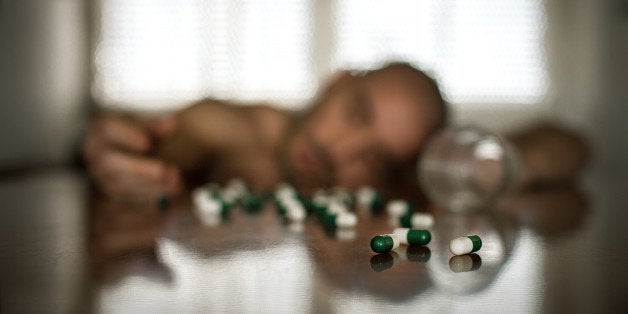
"The junk merchant doesn't sell his product to the consumer, he sells the consumer to his product. He does not improve and simplify his merchandise. He degrades and simplifies the client." -- William S. Burroughs (Naked Lunch)
Heroin is the dark, dirty secret of America today. Few people recognize the devastation wrought by this drug across wide swathes of America and across the border in Mexico. Media coverage has been inexplicably muted and even more strange is the lack of opinion on the causes of this unprecedented epidemic.
***
Let's start with some cold, hard numbers:
- 4.2 million people in the United States have used heroin at some point in their lives.
***
This does not even begin to tell the story of the human and emotional cost that heroin addiction places on individuals, families and treatment providers. Being the parent, spouse or child of a heroin user is a never-ending nightmare, swinging between being enraged at the individual and terrified for their lives.
So what has led to this resurgence of a drug that had since the 1980s largely been replaced by cocaine, methamphetamines and benzodiazepines? To begin answering this question, let's look at another set of statistics, these even more disturbing than the ones related to heroin.
"Heroin is the dark, dirty secret of America today."
An estimated 20,000 people fatally overdosed on prescription opioid painkillers in 2014 which is 9,000 more deaths than those from heroin overdose. An estimated 2.1 million people are addicted to prescription painkillers. The number of opioid painkiller prescriptions dispensed has risen from 43.8 million in 2000 to 89.2 million in 2010, an increase of 104 percent.
This increase in prescriptions has not corresponded to any improvement in pain control or disability outcomes. What it has clearly corresponded to is the deadly march of heroin across America.
Let me illustrate this with one variation of the same story that I have heard from more patients than I care to recall:
John experienced a rotator cuff injury while playing football. He was prescribed a month's supply of Percocet which he ran out of in three weeks. He told his doctor he was still in excruciating pain. He was given a higher dose which he promptly ran out of in three weeks. His doctor cautioned him about the risk of opioid addiction but offered another month's worth of Percocet.
The next time he returned to his physician he was told that he was abusing the medication and refused further prescription. John experienced withdrawal and spoke to a friend of his who he used to buy marijuana from. The friend told him he knew someone who could sell him Percocets for $5 a pill.
John bought Percocet for over a year from this man but by this time his tolerance to Oxycodone had increased to the point that he needed to take up to 40 pills a day. He had also developed liver damage from the massive amounts of Tylenol in the Percocet. He could no longer afford the Percocet and spoke to his dealer who told him there was a guy he knew who could sell him heroin for $10 a bag.
John now shoots up two to three times a day.
This story can be repeated every day in every town, in every county, in every state across America. The heroin epidemic cannot be curbed until the epidemic of prescription painkillers is halted. Since the spike in the use of these drugs does not seem to correspond to any improvement in treatment outcomes, it is high time doctors, hospital administrations, pharmaceutical companies, health insurance companies and medical technology companies collaborated on coming up with alternatives.
In any case, the 25.3 million Americans who struggle with intractable chronic pain are enough of a reason to improve methods of non-narcotic pain control, their delivery to the target population as well as their affordability.
"Whether in physical or emotional pain, it is a pill we look to for answers. ... We have forgotten how to respect our bodies, yet we try and make them do whatever it is we wish them to do."
Beyond the prescription opioid factor, it is also time to confront the cultural phenomena that predispose Americans to drug addiction. The supply of drugs, both prescription and illicit, exists because the demand keeps increasing. Chronic pain may arise from unavoidable injuries or illnesses in some cases but in most it is a culmination of obesity, lack of exercise and not putting in the hard work necessary to deal with acute pain and injury.
Whether in physical or emotional pain, it is a pill we look to for answers. Sadly, modern medicine is teaching us to do so. The deluge of opioid painkillers is only one example; the field of psychiatry has become such that prescribing medication is effectively a first line treatment bypassing lifestyle change, exercise, psychotherapy and building a social support system.
But the process starts long before any pathology. We have forgotten how to respect our bodies, yet we try and make them do whatever it is we wish them to do. We kickstart our nervous systems with caffeine. We calm them down with alcohol. We jolt them with "raves" and "pharm parties"; we have reached a point where teenagers think it is "cool" to throw a collection of prescription pills in a bowl and enact a chemical Russian Roulette.
This requires introspection and reflection. This requires education.
This must change.
_______________________
Need help with substance abuse or mental health issues? In the U.S., call 800-662-HELP (4357) for the SAMHSA National Helpline.
